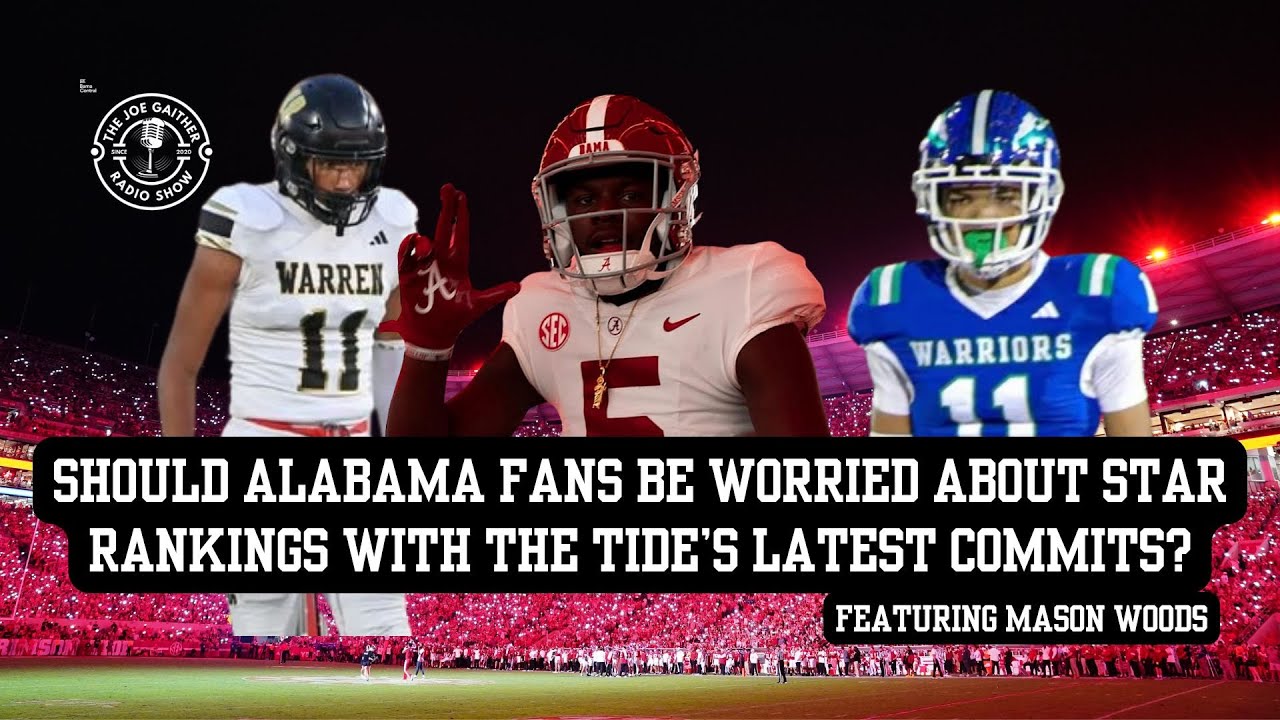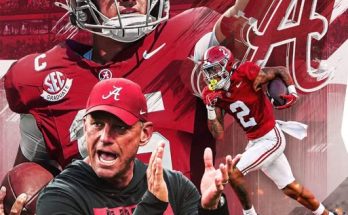Alabama football has long been the gold standard in college football, a program built on dominance, relentless recruiting, and a factory-like production of NFL talent. Under Nick Saban, the Crimson Tide became synonymous with landing top-tier recruits, often finishing with the No. 1 recruiting class in the nation. But with Saban’s retirement and the arrival of Kalen DeBoer, some fans have begun to question whether the Tide’s recruiting momentum can continue at the same elite level. The most recent commits have sparked debate, particularly regarding their star rankings. Should Alabama fans be concerned that the new coaching staff isn’t landing as many five-star prospects as they’re accustomed to?
First, it’s important to acknowledge the context. Recruiting rankings are subjective. While they are a useful tool for evaluating talent, they are not infallible. Plenty of NFL stars were overlooked in high school—Tom Brady, for instance, was a three-star recruit. Conversely, many five-star players never live up to the hype. Alabama’s own history is filled with examples of lower-rated recruits who developed into superstars. Eddie Jackson was a three-star safety before becoming an All-American and Super Bowl champion. Josh Jacobs, another three-star, turned into a first-round NFL draft pick. The point is, star rankings don’t always tell the full story.
That said, Alabama’s recent commits do show a slight dip in average star ratings compared to the Saban era. Under Saban, the Tide routinely signed classes where the majority of players were four- or five-star prospects. The 2024 class, Saban’s last, was stacked with elite talent. Early returns under DeBoer suggest a shift—not necessarily a collapse, but a noticeable adjustment. Some recruits committed to Alabama under Saban have decommitted, and the new staff is working to rebuild relationships. This transition period was inevitable, but it doesn’t mean the sky is falling.
One factor to consider is the coaching change itself. Recruiting is about relationships, and Saban had decades of established connections with high school coaches, parents, and recruits. DeBoer, while highly respected for his Xs and Os, doesn’t have the same recruiting pedigree—at least not yet. He’s known for developing talent, as seen at Washington, where he turned three-star recruits into NFL draft picks. His approach may differ from Saban’s, focusing more on fit and development than chasing every five-star. That doesn’t mean Alabama won’t land elite players, but it might mean the recruiting strategy evolves.
Another consideration is the current landscape of college football. The transfer portal has changed how teams build rosters. It’s no longer just about high school recruiting—programs now supplement their classes with experienced transfers. DeBoer has already shown he’s willing to use the portal, bringing in key players like quarterback Austin Mack and offensive lineman Parker Brailsford from Washington. If Alabama can continue to attract top transfers, the pressure to sign exclusively five-star high school recruits lessens. The portal allows for quick fixes, meaning even if a recruiting class isn’t loaded with five-stars, the roster can still compete at the highest level.
There’s also the reality that recruiting rankings can lag behind actual evaluations. Coaches often identify underrated players before the recruiting services catch up. DeBoer and his staff may see something in a three-star recruit that the rankings don’t reflect. Remember, Jalen Hurts was a three-star quarterback before leading Alabama to a national championship appearance. Development matters just as much as initial talent, and if DeBoer’s staff can coach up players, the star rankings become less relevant.
That’s not to say recruiting rankings don’t matter at all. There’s a reason Alabama, Georgia, and Ohio State consistently compete for national titles—they stockpile elite talent. Five-star players are more likely to contribute immediately and become high draft picks. But it’s also true that team chemistry, coaching, and development play massive roles in success. Clemson won two national titles with classes that were very good but not always No. 1. Development and culture can bridge the gap between a top-five class and the absolute No. 1.
Another angle is the SEC’s increasing competitiveness. Georgia, Texas, and Oklahoma are recruiting at an elite level, and LSU, Ole Miss, and Tennessee are surging. Alabama no longer has the monopoly on top talent in the South. This doesn’t mean Alabama is falling behind, but it does mean the margin for error is smaller. If the Tide’s recruiting dips slightly, the competition is ready to pounce. However, DeBoer’s track record suggests he knows how to win with different types of rosters. His Washington team wasn’t loaded with five-stars, yet he took them to the national championship game.
The biggest question is whether Alabama fans should panic. The answer is no—at least not yet. Recruiting under a new coach takes time. Saban’s first class at Alabama in 2007 wasn’t loaded with five-stars, either. It took a few years to establish the machine. DeBoer deserves a full cycle or two before judgments are made. If, by 2026, Alabama is consistently outside the top five in recruiting, then there might be cause for concern. But right now, it’s too early to say this staff can’t recruit at an elite level.
What should reassure fans is DeBoer’s ability to maximize talent. At Fresno State and Washington, he won with players who weren’t all blue-chips. His offensive system is quarterback-friendly, and his developmental track record is strong. If he can replicate that at Alabama, the program will remain in championship contention, even if the recruiting rankings aren’t quite what they were under Saban.
In the end, star rankings are just one piece of the puzzle. Alabama’s success has never been solely about signing the most five-stars—it’s been about coaching, culture, and development. DeBoer may not recruit exactly like Saban, but that doesn’t mean he can’t win at the same level. The most important thing is whether the players he brings in fit his system and can be developed into winners.
So, should Alabama fans worry about the recent commits’ star rankings? Not yet. The transition period was always going to have bumps. If DeBoer proves he can win big—and early signs suggest he can—the recruits will follow. Alabama’s brand is too strong to fade overnight. The focus should be on how this staff develops players, not just how many stars are beside their names when they arrive. If they can turn three- and four-stars into NFL players, the rankings won’t matter. And if they start winning games, the five-stars will come.
Patience is key. The Saban era was historic, but change doesn’t have to mean decline. DeBoer’s approach might look different, but different isn’t necessarily worse. Alabama fans should judge this new era by results on the field, not just stars on a recruiting page. The foundation is still there. Now, it’s about building something new—and potentially just as great.



